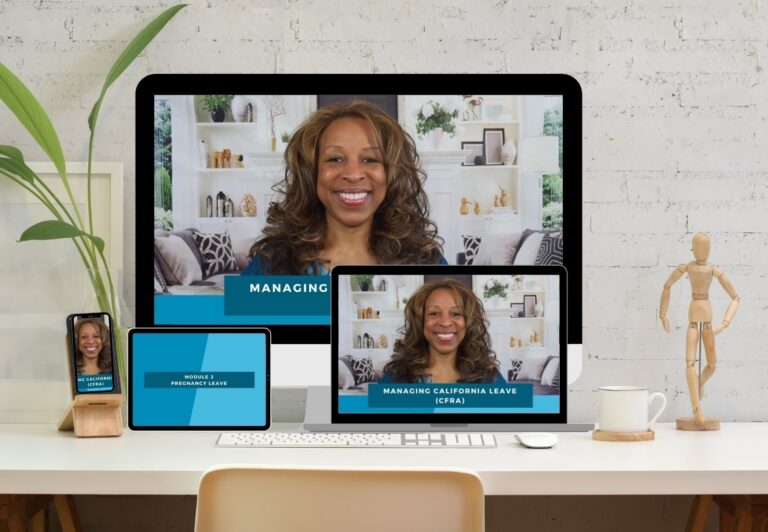How To Create SOPs

By VICKY BROWN
If you spend any time online at all, I’m sure you keep hearing productivity experts talking about developing SOPs – standard operating procedures. In fact I just referenced them in last week’s podcast episode.
But what is an SOP, and how do you create one. Well, the real question is, how do you create one without feeling like you’re being tortured.
Oh sure, you could approach the thing like you’re creating an ISO or Six Sigma level SOP, with a process flow diagram, prep activities and reference tools…but, who has that kind of time; and if I’m being honest – brainpower. I know I don’t.
I just need a step by step guide, that can tell someone else how to do something that needs to get done. A guide that can make sure the thing is done the same way, every time – the quality of the work is consistent; and someone new can be easily trained on the task.
So, let’s start at the top. This is going to be a project that will ultimately take a lot of time and thinking – but remember – it doesn’t have to start that way. First off, give yourself a schedule. Something like – I’m going to write out one SOP a week. Make sure it’s a reasonable goal, so you won’t feel overwhelmed or burned out.
And, I know you might be thinking, one a week? I probably have hundreds of procedures to get through, one a week won’t help me – I need to take a week off and do them all in one sitting. NO YOU DON’T. First off, you don’t have the time to take a week off. Second, even if you did, the amount of mental damage you would do to yourself trying to write all those SOPs in one fell swoop, would be….well, it wouldn’t be a good thing, I can tell you that.
Nope, eat the elephant one bite at a time. And yes, one a week will absolutely help you, because you will be moving forward on your goal. And who knows, some weeks you may even be able to do more than one.
And another thing – remember that ultimately, you don’t have to be the person doing all the writing. If you have team members, even if they’re outsourced, give them the responsibility for writing their part of the process – but more on that later.
“…Big processes are the focus, because they’re easier to start with, and you can get the overall steps down and then fill in the smaller steps later. I call this the Outside-In method.“
Now begin with a big process that needs to get done in the business, and needs to happen the same way every time. For this example, I’m going to use creating a YouTube video. You’ll note I’m not starting with something like editing a video, because that’s a sub process inside creating the video. And for this first pass, I want to focus on big, overarching processes. Things line, creating a video, or creating and distributing client invoices, or onboarding a new client. Big processes are the focus, because they’re easier to start with, and you can get the overall steps down and then fill in the smaller steps later. I call this the Outside-In method
For me, it’s easier for my brain to use this outside to inside approach – vs. starting at the top and filling in every detail of every sub process as I go along. That’s just too tedious at the outset, and makes it way too easy for me to get bogged down in the tiny details.
Now, I like to use excel, at least for the initial design. It’s so flexible and easy to use, and I can kind of see everything on the page. But, you can use anything that works for you. We ultimately transitioned our processes to Asana – and you can absolutely start out using a project management system if you want. But if this is your first crack at writing SOPs, I suggest using something a bit more accessible, like excel.
Now, every SOP should start with what the SOP is designed to accomplish. In our example it’s to create and distribute videos for our YouTube Main channel. Next outline what tools you’ll need, things like, the video, social channels, social channel distribution platform, eMail list and eMail distribution platform.
Again, note I don’t say things like video camera, editing software etc. Those items belong to the sub processes inside the larger process. So once I start filling in those sub processes, I can clearly think about what tools they need, and then go back and update the overall SOP tools list accordingly. Now I know that will mean you won’t quite have a full tools list until all the sub SOPs are written, but remember that my goal here is to help you start writing SOPs in an easily doable way, a way that gets you a written process as quickly as possible.
A pro tip here – one of the easiest ways to capture a process is to write the SOP as you’re doing the process. It’ll help make sure you don’t miss anything.

So, one of your employees just told you that she’s pregnant. Feeling overwhelmed, with no idea where to start? After all, HR just got dumped on your plate. It’s not your zone of genius, and you don’t want it to be.
Managing California Leave is your answer. It’s an easy to understand course, that explains what the various leave programs are – without the HR gobbledy gook. And it gives you a clear step by step guide that walks you through the process of putting someone on leave
Yep, you get all the forms, notices and documents too. Everything you need to do it right and do it fast. After all, you don’t have all day – you have other things to do!
Use the link to get an Insider’s sneak peek And don’t worry – you’ve got this. And we’ve got you.
Now on to the steps. List them out, one per line (another great thing about excel is that you can insert, delete and sort lines at will). For our video production SOP, our steps are Research, Pre Production, Production, Post Production, Marketing and Day of Publishing.
OK – that’s step one. The next step is Pre-Production. And under that step we have Develop Script, Develop the Lead Magnet, Create a B-roll outline, and Develop video excerpts – this one may have sub SOPs like creating a video description, selecting the end card video, creating a comment etc.
So, we walk through the rest of the processes, and note sub processes as we identify them.
Don’t be afraid to have reference materials stored outside of your excel file. When we first started, again – before Asana – we just used Evernote. It allowed us to grab screenshots from the web, store PDFs or word docs we had created in house etc. Then we just referenced those docs in the Excel SOP document. Again, that keeps the SOP document as clean as possible, and still provides more information if someone needs it.
Now you have the first draft of your SOP for creating YouTube videos. Again, the next steps are reviewing what you have, and adding things you may have missed like reference materials. Then, and only then, should you move on to filling in the smaller, sub SOPs.
In fact, just to keep my brain fresh, I would move on to the next large SOP (like new client onboarding), and leave the Creating Videos sub SOPs for later.
Now, like I said, later on – if you want – you can get fancier and transition to a project management application like Asana or Click Up or something similar. But if this is your first time tackling SOPs, I strongly suggest you start out with Excel. You’ll find it a really great tool to use for this type of project. In fact, even though we use Asana for almost everything in my business, one of our most vital SOPs was created in, and still exists in, excel – it’s the one my Executive Assistant uses to get through the day. And believe me, it is crazy huge, has all sorts of references, and we would absolutely die without it.
So, don’t get overwhelmed at the thought of creating SOPs for your business. Just use the Outside In process, and you’ll get them done faster than you thought. And once you even have a few completed, it will be a huge load off your mind – because you’ll know that part of the business has been locked down and memorialized so it can always be done, and done well.
Spread the word
MORE HUMAN, MORE RESOURCES
310.308.7680 option 1
hello@idomeneoinc.com

